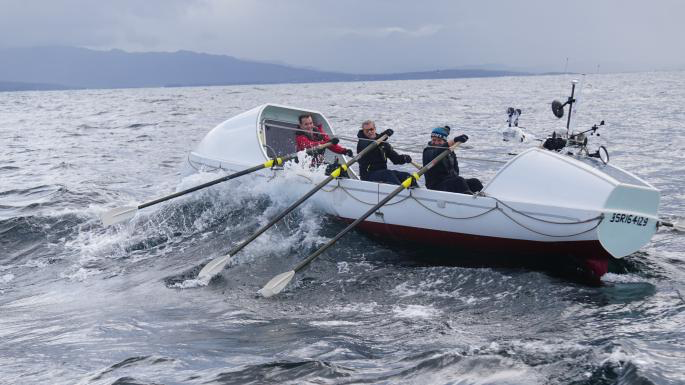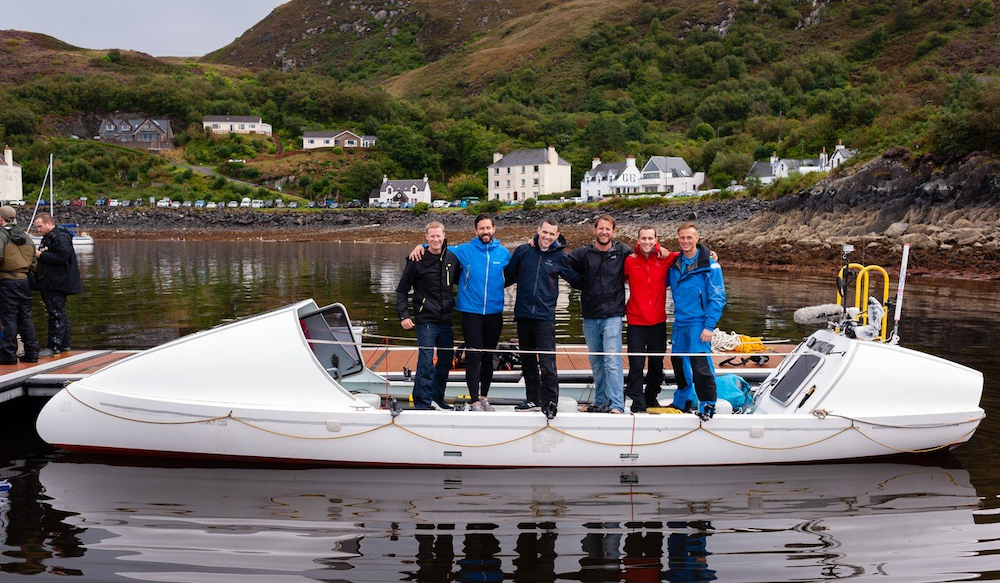Rowing Drake Passage: an impossible feat?

A team’s attempting to row Drake Passage from Cape Horn to mainland Antarctica. They face 750 miles of ferocious seas and freezing temperatures in an 8m vessel, battling waves of up to 80 feet. The journey’s expected to take 20 days with the rowers taking turns in 90-minute shifts. The endeavour’s been dubbed The Impossible Row.
Brit, Jamie Douglas-Hamilton, is onboard. The drive to explore courses through his veins, inherited from his grandfather, Douglas 14th Duke of Hamilton, who was the first to fly over the summit of Mount Everest in an open cockpit biplane.
In 2014, Jamie was part of a Guinness World Record breaking team that rowed 5,000 nautical miles across the Indian Ocean from Australia to Africa, according to The Herald.
“When I was a boy, I read “Endurance” about Shackleton’s rescue voyage when they sailed from Elephant Island to South Georgia in a small life boat and I couldn’t believe the hardship they went through,” he says. ‘It is exciting but slightly scary that we are going in a similar size boat that is lower to the sea and that we are rowing against the waves and current which will be dragging us East, as we will be rowing Southwards.” This expedition is the riskiest yet.
“This will be a world first. No-one’s done completely human powered before and there’s a lot that can go wrong.
“Once you’re in the ocean you’ve got the full force of the wind straight into your face. If you capsize or go completely over, you’d get soaked the whole way through and you get two to five minutes of survival time. The biggest fear is hypothermia because we will capsize, and we will get wet.
“It’s a dangerous crossing but I think it is possible. We’ve got a great team.
“It is one of the most interesting, one of the most dangerous rows in history,” Jamie continues via SCMP.com. “But what makes it so interesting is it’s not a done deal. We are talking about it, and the press talk about it, as though we’ve already done it. But there is so much that can go wrong.”
The team plans to leave from South America in December. The exact date depends on the weather. They aim to make their way to the Antarctic Peninsula, then continue through the roaring 40s, furious 50s and to the screaming 60 degrees south and into the Southern Ocean. The Drake Passage is off Cape Horn, on the southern tip of Chile, where the Pacific, Southern and Atlantic oceans meet and the furious winds of the roaring 40s latitude are funnelled into the narrow stretch of water, creating huge waves.
Although the Passage can be hectic, on other days it can be calm, earning itself the nicknames the Drake Lake.
“The weather can whip up very quickly, and the waves come from different sides. But it’s a very small boat,” Jamie continues.
“You can capsize, you can barrel roll, and if you get wet you have to change very, very quickly. You don’t even know how the wildlife will react down there. Will orcas try to ram the boat, thinking it’s something else having never seen an ocean rowing boat? That’s why it’s so exciting.”
Who’s onboard?

The team comprises of Jamie, Fiann Paul, Colin O’Brady, Cameron Bellamy (who rowed with Jamie on the Indian Ocean crossing), Andrew Towne and John Peterson.
All of them are experienced athletes who have each taken on considerable challenges in the past, says The Herald.
They’ll row in 90-minute shifts around the clock, with three rowing as three attempt to sleep.
Jamie’s been training for the crossing for the last year but has ramped up his efforts as the expedition crept closer.
For the few last weeks he has set a timer during the night and jumps out of bed and onto the rowing machine every 60 minutes.
Paul has rowed a host of oceans, including leading a team that became the first to row the Arctic Ocean, in 2017, according to SCMP.com. They paddled from the Norwegian mainland to the Svalbard archipelago in the far north and then on to Jan Mayen Island near Iceland.
The current trip needed a step up in planning for Paul. The cost, permits and logistics have been more demanding than any other crossing, let alone finding a team.
“When you filter the whole world’s population and you find people who have courage, skills, time, fitness and money, then you have maybe 10 individuals on the planet,” he says. “That’s a big deal.”
The other four crew members are Americans Colin O’Brady, Andrew Towne and John Petersen, and South African Cameron Bellamy.
Colin O’Brady, in particular, has brought a great deal of attention to the row. He rose to prominence last year when he became the first person to walk unsupported solo across Antarctica, a trip he dubbed The Impossible First.
Permits require them to have a support boat on hand at all times, which is not the norm for ocean rowing. This is intended to make the trip safer overall, but nothing is a given in the Drake Passage.
Expectations for the journey
Temperatures when they leave Cape Horn are expected to be around 3 degrees, dropping to freezing and below on the approach to Antarctica.
If a storm hits, there isn’t enough space in the boat for all six to shelter – three can fit into the hold and the other three would have to lie on top of them.
If any water gets into the hold it affects the boats ability to self-right after capsizing.
Support
The expedition is being filmed by the Discovery Channel which is producing a documentary to be screened in 2020.
The challenge crew will be accompanied by a ship that won’t intervene unless someone’s life is in jeopardy.
Skin and weight loss
Freeze-dried food, a water desalination unit – the crew should be drinking six to seven litres per day to stay hydrated and, crucially, warm – and a satellite phone will be on board with the crew, who will be attempting to call home on Christmas Day.
Each man is expected to expend around 10,000 calories per day but with food supplies probably only around 6,000 per day, the deficit will cause weight loss, making them feel the freezing temperatures even more.
Jamie is anticipating the pain he will feel sitting and rowing for hours over three weeks.
During his Indian Ocean Row, he lost seven layers of skin as it rubbed against the boat, and his three and a half stone weight loss over three months meant his bones were more exposed to the hard wood.
But the feeling of achievement when a challenge has been completed makes the pain, fear and exhaustion worth it.
He says: “Once you look back on it it’s some of the best memories you’ll ever have in your life, great friendships and it’s just so much fun but it wasn’t at the time.
“I want to show that not everything is impossible that looks it. If you really commit to something these things can be done – you can push yourself so much harder than you ever knew possible.”
Read more at The Herald and SCMP.









